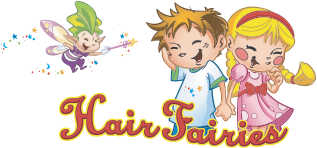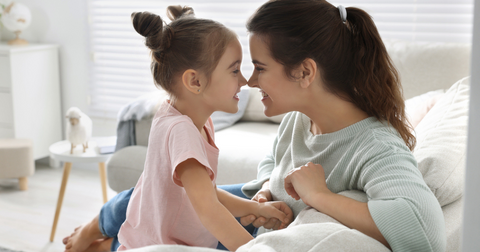Head lice are a common, yet intensely aggravating issue – especially among school-aged children. While they’re not dangerous, the itchiness and discomfort they cause can be quite irritating.
Luckily, there are home remedies available that can help combat these tiny invaders. Let’s look at some of the more effective and natural ways to deal with head lice.
Understanding Head Lice
Head lice are tiny insects that are particularly fond of the warm, hidden environment that our scalps offer.
Please know that head lice are not a sign of poor hygiene or an unclean environment. They're simply creatures that will infest anyone given the chance.
The life cycle of head lice
The lifecycle of head lice consists of three stages: the egg (or nit), the nymph, and the adult.
- Egg (nit): Nits are tiny and are hard to see. Nits take about 6-9 days to hatch.
- Nymph: Once the nits hatch, they release nymphs (immature lice). These nymphs mature into adults about 7 days after hatching.
- Adult: Adult lice are about the size of a sesame seed, have six legs, and are tan to grayish-white. Adult lice can live up to 30 days on a person's head but will die within one or two days if they fall off the host.
For a deeper dive into head lice, read Lice Eggs, Nits, Nymphs & Adults: FAQ.
How do head lice spread?
Contrary to popular belief, head lice cannot jump, fly, or swim.
They spread primarily through direct head-to-head contact. This is why children – who often play closely together – are more susceptible to getting head lice.
Indirect transmission is less common but can occur through sharing personal items like hats, combs, and headphones, or by lying on a bed, couch, pillow, or carpet that has recently been in contact with an infested person.
Effective Home Remedies
While head lice can be a persistent nuisance, several home remedies can help manage an infestation.
Physical Removal

Wet combing and nitpicking: This is one of the most effective ways to rid hair of lice (and the only method allowed for babies 2 months and younger).
It involves meticulously combing through the hair with a fine-toothed comb to physically remove lice and their eggs. The comb-out method can be used in conjunction with any of the other treatments listed to increase their effectiveness.
How to use
- Wet the hair: Wetting the hair can make it easier to comb and see the lice and nits.
- Apply a detangler or conditioner: This helps the comb glide through the hair more easily.
- Section the hair: Divide the hair into small, manageable sections. Use clips to keep the sections separate.
- Start combing: Using a fine-toothed nit comb, start at the scalp and comb through to the ends of the hair. Be sure to comb through each section of hair several times.
- Clean the comb: After each pass, wipe the comb on a white paper towel or rinse it in a bowl of warm, soapy water to remove any lice or nits.
- Repeat: Repeat the combing process on every section of the hair. Be thorough since missing even a few nits can lead to re-infestation.
- Rinse out the hair: Once you've combed through all sections, rinse out the detangler or conditioner.
- Check the hair: After the hair is dry, check it again for any missed nits or lice. Use a nit comb or your fingers to remove any you find.
- Repeat: Repeat this process every few days for at least 2 weeks. This helps ensure that you remove any lice or nits that were missed in previous sessions.
Remember, the comb-out method requires patience and diligence. If you're having trouble removing all the lice and nits (or if the infestation is severe) it may be best to seek help from a healthcare provider or professional lice removal service.
Oils

Tea tree, lavender, and anise oil: Tea tree, lavender, and anise oil are effective in repelling lice and have insecticidal properties. These essential oils can be mixed with a carrier oil or into your regular shampoo. We find tea tree oil so effective, that we use it in our Nit-Zapping oil and shampoo.
Olive, and coconut oil: Olive and coconut oil are used to smother lice. A study found that coconut and anise oil spray was significantly more successful than the commonly used treatment permethrin. Olive oil can also be used to suffocate and kill lice, but like all treatments, they require consistent application.
How to use
Here's a step-by-step guide on how to the oil home remedy lice treatments.
- Choose your oil: Tea tree, lavender, coconut, anise, or olive oil.
- Mix with a carrier oil: If using tea tree, lavender, or anise oil, you’ll need to mix it with a carrier oil (like coconut or olive oil) to avoid skin irritation. A few drops should be sufficient.
- Apply to scalp: Massage the mixture into the scalp and hair thoroughly.
- Leave in place: Let the oil sit for at least 1 hour or overnight for more severe infestations.
- Rinse and comb: Rinse out the oil and use a fine-toothed comb to remove any dead lice or eggs.
Common household items

Petroleum jelly: This product works by suffocating lice. However, they can be challenging to wash out and may not be effective in eliminating all lice.
Mayonnaise: Mayonnaise is a common kitchen item that is used to suffocate lice. However, it's messy and can be difficult to remove.
How to use
Here's a step-by-step guide on how to use petroleum jelly or mayonnaise lice treatments.
- Apply generously: Coat the scalp and hair thoroughly with petroleum jelly or mayo.
- Cover with a shower cap: This will contain the mess and potentially suffocate the lice.
- Leave in place: Keep the petroleum jelly in overnight and the mayo in for at least 2 hours (or longer for more severe cases).
- Wash out: Rinse and wash your hair thoroughly. You may need several washes to completely remove either of these products
- Comb out lice: Use a fine-toothed comb to remove any remaining lice or nits.
Cetaphil cleanser: Some people use Cetaphil cleanser to suffocate lice, followed by blow-drying the hair to “seal” the lice in. This method requires careful application and may not be suitable for everyone.
How to use
Here’s how to use the Cetaphil cleanser method:
- Apply cleanser: Apply the cleanser to dry hair, thoroughly coating it from the scalp to the hair tips.
- Wait: After application, wait for about 2 minutes.
- Comb out excess: Using a fine-toothed comb, comb out any excess Cetaphil from your hair.
- Blow dry: Blow dry your hair until it's completely dry. This process might take longer due to the nature of the cleanser.
- Leave on: Leave the dried cleanser on your scalp for at least 8 hours or overnight.
- Rinse out: Rinse out the cleanser from your hair.
- Comb through hair: Comb through your hair again to ensure all dead lice and eggs are removed.
- Repeat: Repeat this procedure once a week for 3 weeks. Even one louse left uncoated may survive to reproduce.
These home remedies should be used in conjunction with regular combing with a nit comb to ensure all lice and eggs are removed from the hair.
It's also crucial to clean all bedding, clothing, and personal care items that have come into contact with the infested individual to prevent re-infestation.
What about vinegar?
Vinegar gets an honorable mention for its ability to loosen the glue that holds nits to the hair shaft. But it doesn’t kill lice and shouldn’t be used as a standalone treatment.
What Not to Use or Do
When dealing with a lice infestation, it's not only important to know what to do, but also what not to do. Certain methods and substances can be ineffective, potentially harmful, or even dangerous.
With that in mind, here are several treatments NOT to use:
- Pet lice treatments: It's essential to remember that treatments designed for pet lice should not be used on humans.
- Baking soda: While baking soda is often suggested as a home remedy for lice, it doesn't have any proven lice-killing properties. It might help in loosening eggs and nits from the hair shafts, but it should not be relied upon as a standalone treatment.
- Heat treatment: Heat can kill lice and their eggs, so washing infested clothing and bedding in hot water and drying on high heat can help prevent re-infestation. However, direct heat treatment on the scalp is not recommended due to the risk of burns.
- Flammable substances: Some people may suggest using flammable substances, such as gasoline or kerosene, to kill lice. This is extremely dangerous and should never be attempted.
When to Seek Professional Help

While over-the-counter treatments and home remedies can be effective in treating lice, there may be times when professional help is required.
If you've been consistent with your treatment plan and are still noticing symptoms of a lice infestation, such as itching, visible nits, or live lice, it may be time to seek professional help.
This could indicate that the lice are resistant to the treatments you're using, or that re-infestation is occurring.
Hair Fairies' Services
Hair Fairies offers professional lice treatment services, providing expert advice and a comprehensive approach to lice removal. Our trained lice clinicians can perform a thorough comb-out, apply treatments, and provide guidance on preventing future infestations.
Our in-salon treatments utilize our Nit-Zapping products, allowing for a more concentrated application that can be highly effective in treating stubborn infestations.
Dealing with a lice infestation can be stressful and time-consuming.
If you're struggling with treatment or prevention, don't hesitate to reach out to a professional for help. At Hair Fairies, we're committed to making the process as easy and stress-free as possible.
Tackling a lice infestation requires patience, diligence, and an appropriate treatment strategy.
While home remedies and over-the-counter treatments can be effective, professional help may be necessary in certain scenarios, particularly for stubborn infestations.
Remember, the key to successfully eliminating lice lies in consistent treatment, thorough comb-outs, and careful cleaning of personal items and surroundings. With these strategies in place, you can regain control and put an end to the lice infestation.




Comments (0)
There are no comments for this article. Be the first one to leave a message!